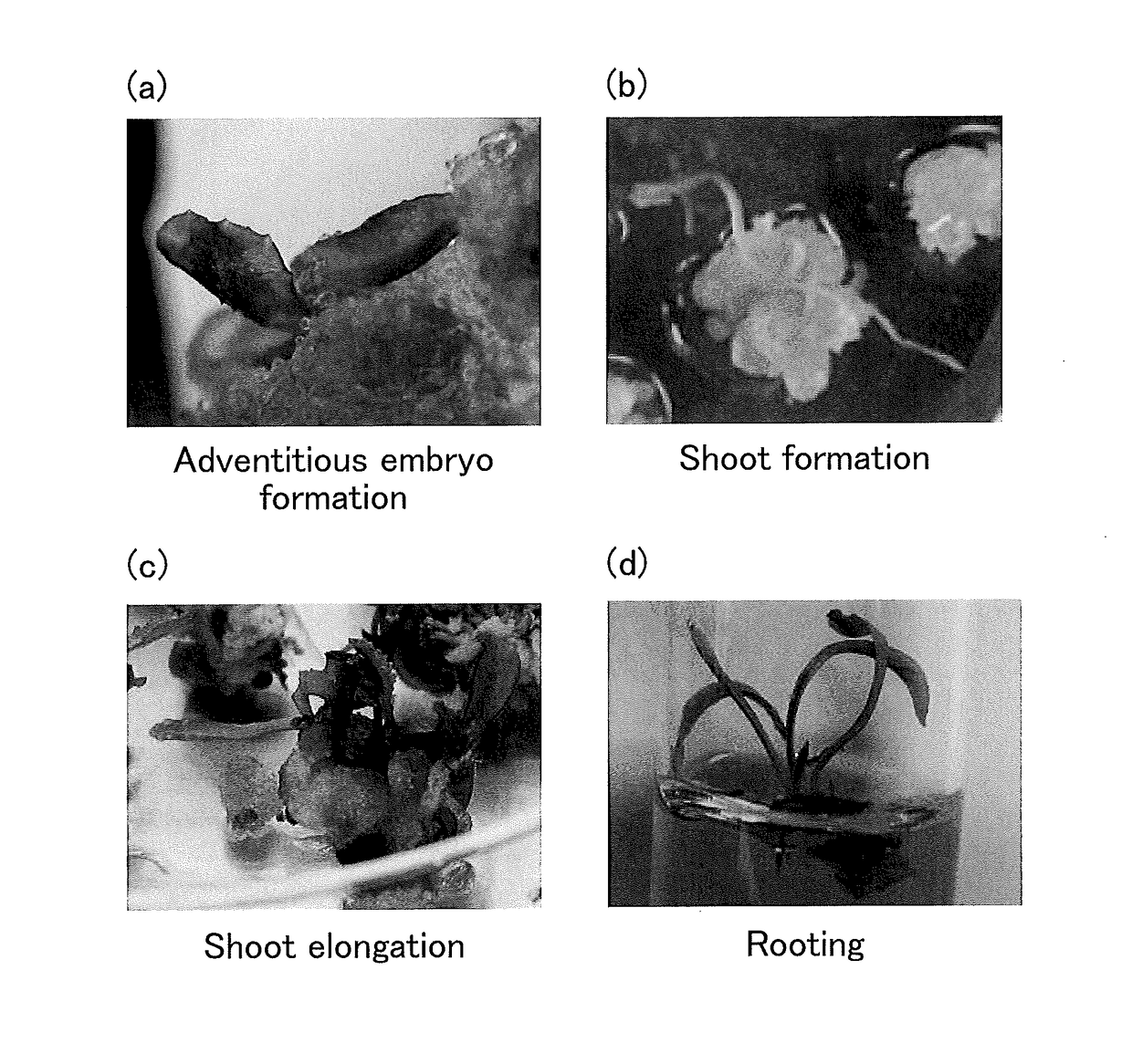Plant-adventitious-embryo induction method, plant restoration method, and plant reproduction method
a plant-adventitious, induction method technology, applied in the field of plant-adventitiousembryo induction method, plant restoration method, plant reproduction method, can solve the problems of limited season for extracting rubber from it, limited period during which natural rubber can be extracted from mature trees, and difficult to greatly increase the production of natural rubber using hevea brasiliensis, etc., to achieve stable regeneration of plants and stably reproduce
- Summary
- Abstract
- Description
- Claims
- Application Information
AI Technical Summary
Benefits of technology
Problems solved by technology
Method used
Image
Examples
examples
[0098]Hereinafter, the present invention will be described in more detail by reference to examples which are not intended to limit the scope of the present invention.
[0099]The following is the list of the chemicals used in the examples using Sonchus oleraceus. [0100]NAA: naphthaleneacetic acid[0101]BA: benzyladenine
[0102]Sonchus oleraceus: plants aseptically germinated from seeds of Sonchus oleraceus naturally grown in Nada ward, Kobe, Japan.
(Callus Induction (Induction Step))
[0103]Leaves and stems were collected from Sonchus oleraceus. Then the surfaces of the collected leaves and stems were washed with running water and further washed with 70% ethanol. Subsequently, they were sterilized with a solution of sodium hypochlorite diluted to about 5 to 10% and then washed with running water again.
[0104]Next, tissue sections of the sterilized leaves and stems were inserted in an induction medium (solid medium) and cultured (induction step). The induction medium was prepared by supplement...
PUM
| Property | Measurement | Unit |
|---|---|---|
| concentration | aaaaa | aaaaa |
| temperature | aaaaa | aaaaa |
| concentration | aaaaa | aaaaa |
Abstract
Description
Claims
Application Information
 Login to View More
Login to View More - R&D
- Intellectual Property
- Life Sciences
- Materials
- Tech Scout
- Unparalleled Data Quality
- Higher Quality Content
- 60% Fewer Hallucinations
Browse by: Latest US Patents, China's latest patents, Technical Efficacy Thesaurus, Application Domain, Technology Topic, Popular Technical Reports.
© 2025 PatSnap. All rights reserved.Legal|Privacy policy|Modern Slavery Act Transparency Statement|Sitemap|About US| Contact US: help@patsnap.com

